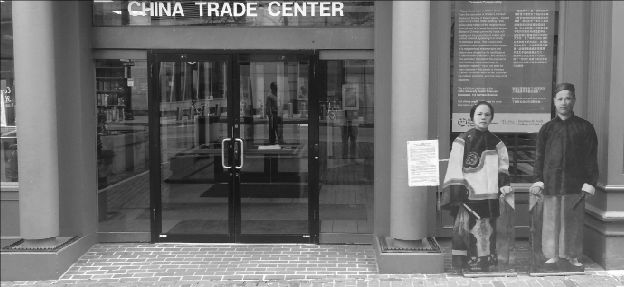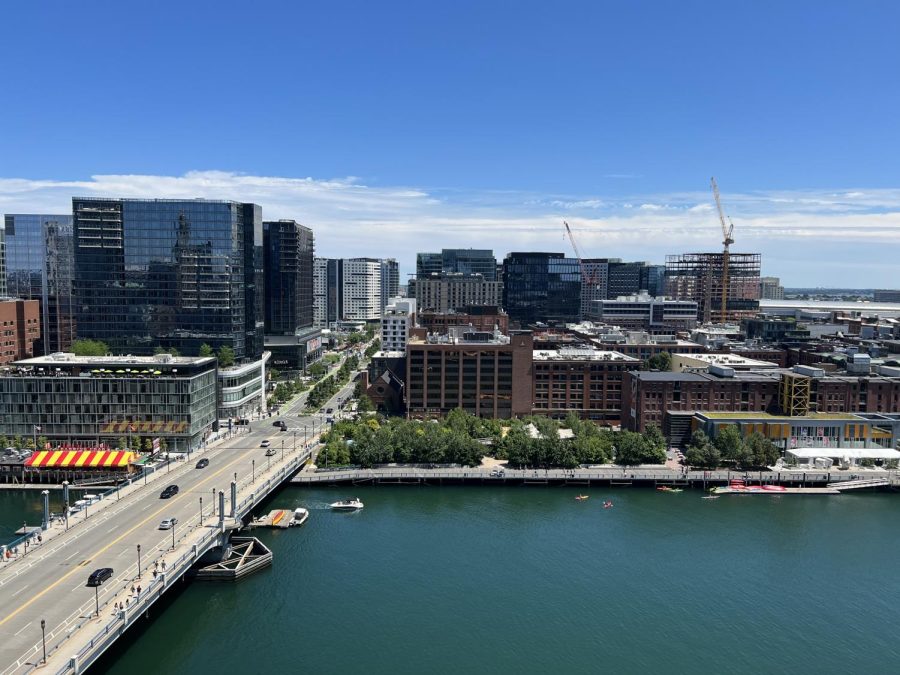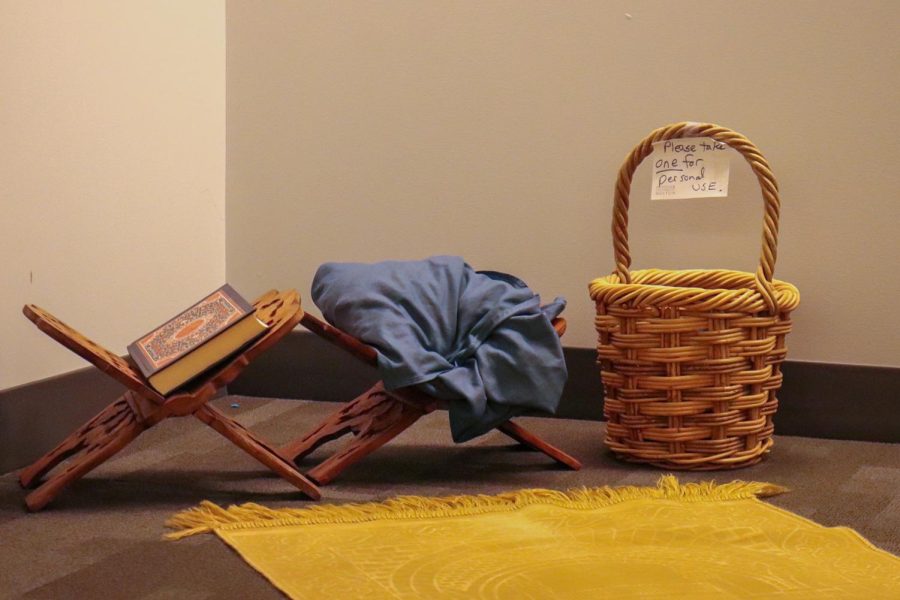The “These Words” exhibition, a display of Chinatown’s history with the written, printed and read word, closed last week, having raised awareness for a new Boston Public Library (BPL) feasibility study in the neighborhood.
The exhibit was on display from Aug. 13 through Sept. 30 in two locations: the China Trade Center and the Tufts University Health Sciences Bookstore.
Dr. Diane O’Donoghue, Senior Fellow for the Humanities at Tisch College, is one of the project’s three directors and worked in conjunction with Susan Chinsen, Managing Director of the Chinese Historical Society of New England located on the bottom floor of the Trade Center.
The front of the Trade Center, facing Boylston Street, was adorned with window perforations, detailed images that were visible from the street side, but not the interior. Archival photos and descriptions of their contents in both English and Chinese characters spanned the windows, illustrating Chinatown’s long history of communication through written word, as well as its struggle to re-establish a branch of the Boston Public Library.
Chinatown had its own branch of the public library from 1896 to 1938 in two locations through the district: a book delivery station at 202 Harrison Ave. and a reading room on Tyler Street, which became a full branch in the 1920’s. After the initial closing, the Tyler St. branch returned from 1951 to 1956, ending the BPL’s presence in Chinatown.
“There’s something at stake in losing your library,” O’Donoghue said. “And there’s something at stake in getting it back.”
A similar arrangement, with a few unique window displays of its own, was on display at the Tufts bookstore location, wrapped around both street-facing sides of the building. Included were images of the Oxford Street Bulletin Board, which was once a source of neighborhood news and job postings, the storefront library that occupied Washington street in 2010, and the work of the Shanghai Printing Company. According to O’Donoghue, Shanghai was the largest producer of Chinese laundry tickets and restaurant menus in New England during the early 20 century, which proved to be an invaluable resource in a neighborhood serving bilingual clientel.
Some photos on display depict more recent history of Chinatown, including a still image of a pop-up library. It is one of the neighborhood’s latest efforts to keep literature available to Chinatown’s citizens.
“Our hope was to provide something that would mirror the neighborhood,” O’Donoghue said.
Several pop-up libraries have been employed throughout the neighborhood in recent years, including at a reading room in the Oak Terrace complex in 2010 and at Mary Soo Hoo Park as recently as June of 2016.
Libraries, in addition to their significance as pillars of education, were equally important as places for Chinatown residents to congregate, according to Dr. Carolyn L. Rubin of Tufts University.
“The storefront library really demonstrated that there is a need and an appetite for a library branch,” Rubin said.
Both Rubin and O’Donoghue have expressed the importance of youth involvement in the advocacy for a new branch, including the recent programs like the Chinese Youth Initiative.
“I wanted to give visibility to this remarkable group of people,” said O’Donoghue.
Rubin, along with the friends of the Chinatown Library and the Chinatown Cultural Center, published an open letter to Mayor Marty Walsh’s administration in May to show gratitude in light of the new feasibility study.
Rubin said she believes that the new President of the BPL, David Leonard, as well as mayor Walsh, are committed to the feasibility study.
Walsh included $50,000 in the capital budget of the 2017 fiscal year for the feasibility study, which is currently still in development, according to the BPL.
A previous feasibility study, completed in 2008, did not see the opening of a new branch due in part to the recession that followed shortly afterward.
The Boston Public Library is expected to have more information about the feasibility study within the coming weeks.







